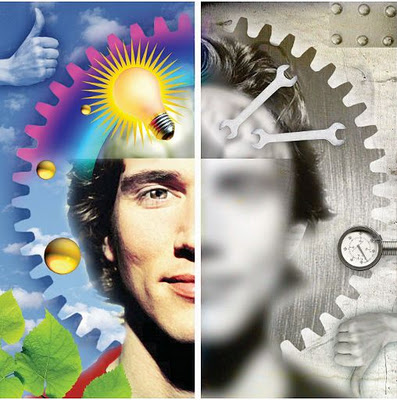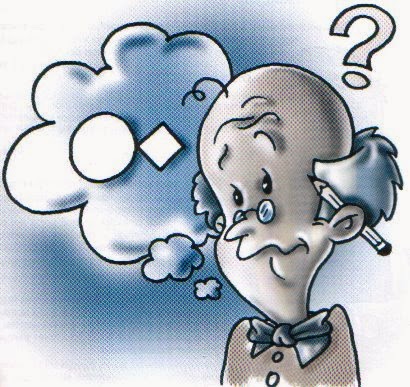EARLY AND MIDDLE ADULTHOOD

EARLY ADULTHOOD

PHYSICAL DEVELOPMENT
In general, young adults are in good physical condition.
Lifestyle factors such as diet, obesity, exercise, smoking habits and consumption of alcohol, drugs and pharmaceuticals may or may not promote adequate health at this time of life.
Sexual dysfunction, sexually transmitted diseases, menstrual problems, infertility, are sexual and reproductive concerns at this age.
In this age group, accidents are the leading cause of death.
Mental health is generally good in early adulthood, but certain conditions, such as depression, become more common.
Strength, energy and stamina are at their best.
Physical activity helps in weight maintenance, muscle toning, strengthening the heart and lungs.

INTELLECTUAL DEVELOPMENT
It consists of the ability to consider opposing points of view simultaneously, accepting the existence of contradictions.
It allows the integration between beliefs and experiences with the inconsistencies and contradictions discovered, thus favoring the evolution of new points of view, which need to be constantly updated.
Adults who achieve dialectical thinking are characterized because they are more sensitive to contradictions, appreciate contrary opinions and have learned to live with them.
According to Shaie's model the young adult is in 3 stages:
Achievement stage: recognizes the need to apply the acquired knowledge.
Stage of responsibility: the individual uses his cognitive capacities.
Executive stage: they develop the ability to apply knowledge.

LANGUAGE DEVELOPMENT
The vocabulary grows unlimitedly
Grammatical development is completed.
Consistent use of expressive resources.
For a good development of the language, it influences:
Basic aspects (form, content and use).
Relationship with learning processes.
Influence of the cultural social context.
PERSONALITY DEVELOPMENT
The individual develops gradually under the combination of hereditary factors, social environment and personal experience.
Personality development is based on two models:
NORMATIVE CRISIS MODELS: "They describe development as a definite sequence of social and emotional changes with age".
RIGHT TIMES OF OCCURRENCE OF EVENTS MODEL: More stable conception of development states that the changes produced depend more on social events.

SOCIAL DEVELOPMENT
Aspects involved:

LOVE: Rice (1993), divides love into five elements:
Romantic love: tenderness or passion, intense feelings.
Erotic love: sexual attraction.
Dependent love: in extreme cases it could turn into obsession.
Filial love: based on companionship or common interest.
Altruistic love: genuine interest and concern, giving and receiving are mutual.

BONFOLDNESS: Stein (1981), proposes four typologies of bachelors: voluntary temporary or stable and involuntary temporary or stable.

COHABITATION: There is more physical aggression than in marriage.
Post-marital disillusionment occurs earlier in couples who have cohabited.

MARRIAGE: The quality of married life has a strong influence on the happiness and satisfaction of individuals. The family cycle is divided into stages that reflect the changes that have occurred.

DIVORCE: Kersten (1990) states that disaffection occurs in three stages: initial, intermediate and final. The latter is characterized by the desire to end the marriage.

SEXUALITY:
The young adult must achieve:
Independence
Competence
Responsibility and equality in relation to their sexuality
Determine the lifestyle they will lead

PATERNITY: This event marks a period of transition in the life of the couple, since the arrival of a new member alters or impacts the dynamics of the couple.
The desire to have children is almost universal Different psychological approaches:
Freud: the instinctive desire of women.
Erikson: childbearing is a basic developmental need.
Other theorists: parenthood is part of a natural and universal process of the animal world.

FRIENDSHIP: In early adulthood it occurs more frequently than in other stages of life. It implies trust, respect, enjoyment of each other's company, understanding, among others.

HIGHER EDUCATION AND WORK: The university period can be a time of intellectual search and personal growth; it offers the possibility of molding a new personal identity.
College students can present an identity crisis that can lead to serious problems (drug and alcohol abuse, eating disorders, suicide).

WORK: Work is influenced by many aspects of development, physical, intellectual, emotional and social.
Young workers are more concerned with how interesting their work may be and what developmental possibilities it may present.

MIDDLE ADULTHOOD

PHYSICAL DEVELOPMENT
People begin to experience loss of visual acuity requiring reading glasses.
There is also a decrease in hearing ability, especially higher frequency sounds.
Taste buds and sense of smell lose sensitivity during middle adulthood and foods that may appear appetizing to a young person may become tasteless.
Strength and coordination gradually decrease at this stage.
We may notice changes in our physical and mental abilities, such as remembering names or having difficulty climbing stairs, opening containers or walking long distances.

INTELLECTUAL DEVELOPMENT
People in middle adulthood can learn new skills, unless they feel incapable; but they demonstrate an unquestionable advantage in solving everyday problems, vocabulary, and general information
Traditional tests reveal that patterns of intelligence remain in middle age, performance on some tasks improves in adulthood, and peak performance is achieved in a variety of skills.
When adults do not perform well on tests, it may not be a problem of poor memory or reasoning ability, but rather that these types of tests are not appropriate for their age group.
Middle-aged adults tend to interpret what they read, see, or hear according to the personal and psychological meaning it has for them. Instead of accepting what they read at face value, they compare it to their own life and learning experiences.

PERSONALITY DEVELOPMENT
There are two traditional approaches that attempt to explain personality development in middle adulthood:
The normative crisis model: this model explains that personality development occurs through crises at specific age stages. In these crises there is strong psychological questioning or turmoil.
The life events model: This is the most accepted model at present. It explains that personality development occurs thanks to particular events in people's lives, rather than through age and its crises. It is these events that produce similar psychological situations in people, regardless of their ages.
Both approaches are valid when trying to explain the development of personality in the middle adult, since they claim that in this period there is still evolution and development of personality, being a continuous and significant development.

SOCIAL DEVELOPMENT
According to Jung, until the age of 40, women and men focus on their obligations to their families and society, and develop those aspects of personality that foster these goals.
Women emphasize expressiveness and nurturance; men an achievement orientation.
When children grow up and their careers are established both men and women are free to balance their personalities so they pay more attention to their inner selves.
Many divorces and remarry at this stage and start new families again.